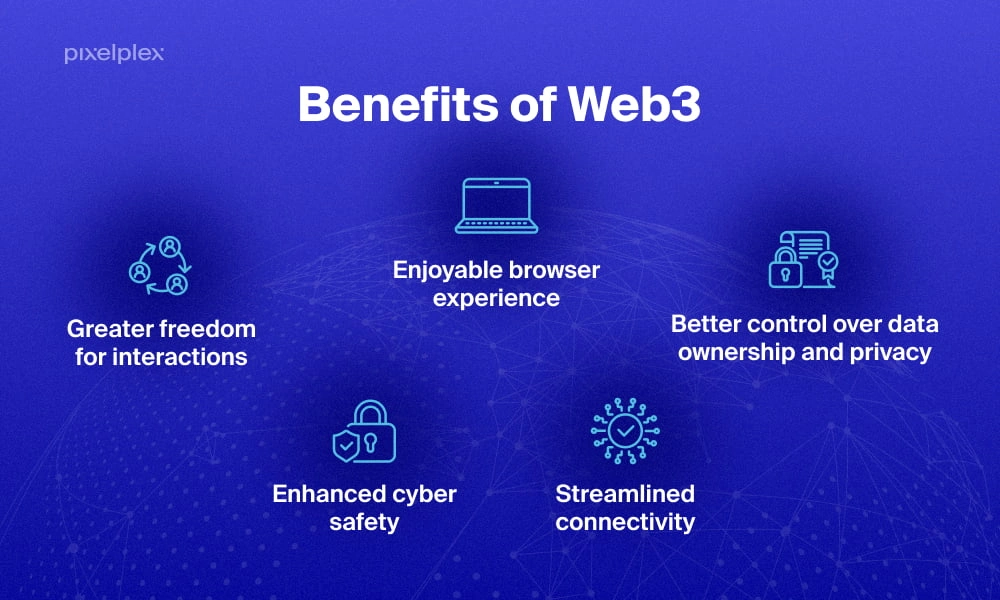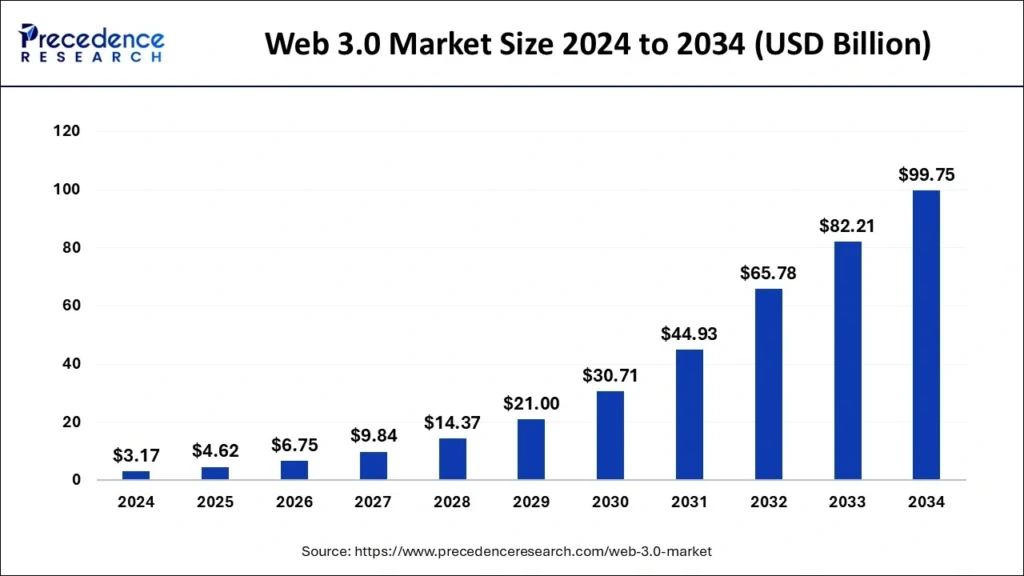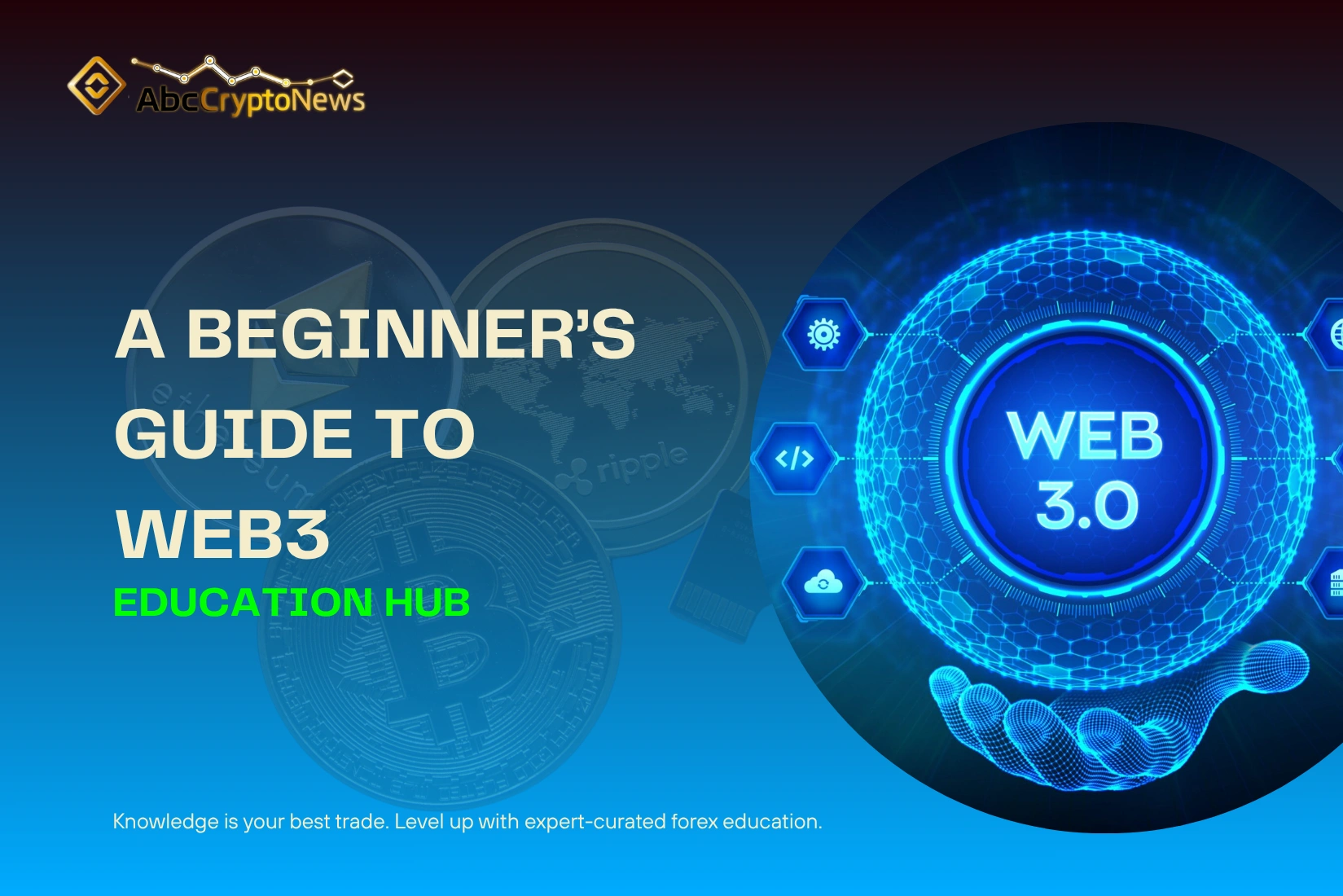Web3 for Beginners: Understanding the Next Evolution of the Internet
The term Web3 is increasingly being mentioned in tech circles, startup pitches, and even casual conversations about the internet’s future. For beginners, it may seem like just another buzzword—but Web3 is more than hype. It represents a fundamental shift in how the internet is structured and how people interact with it.
In this guide, we’ll walk through what Web3 is, how it works, its core technologies like blockchain, and the real reasons it matters today—and in the years to come.
Web3 for Beginners: What is Web3?
To grasp what Web3 is, it helps to understand what came before:
- Web1 (the Static Web): The earliest form of the internet (1990s–early 2000s), where users mostly consumed content from static websites.
- Web2 (the Social Web): The current phase, driven by platforms like Facebook, Google, and YouTube. It emphasizes user-generated content, interactivity, and social sharing—but at the cost of centralized control and personal data privacy.
Web3, often described as the decentralized web, aims to shift control away from centralized platforms and return ownership of data and digital identity to users. It’s built using blockchain technology, and its structure is designed to be more transparent, open, and secure.
Web3 for Beginners: How Does Web3 Work?
At its core, Web3 operates on blockchains, which are distributed ledgers that store data across many nodes (computers). This makes tampering or unauthorized control much harder. Here are the building blocks:
- Smart Contracts: Programs that automatically execute actions when conditions are met (e.g., transfer of crypto after a digital sale).
- Cryptographic Wallets: Digital tools that let users interact with blockchain applications, own digital assets, and verify identity without logging into centralized platforms.
- Decentralized Applications (dApps): Apps that run on blockchain networks without centralized servers—examples include Uniswap (finance), OpenSea (NFTs), and Audius (music streaming).
Because of these technologies, Web3 enables a new internet where trust is encoded into the system rather than intermediaries.
Web3 vs Web2: Key Differences
| Feature | Web2 | Web3 |
|---|---|---|
| Ownership of Content | Platforms own user data | Users own their data and digital assets |
| Monetization | Ad-driven, often opaque | Transparent and token-based |
| Infrastructure | Centralized servers | Distributed nodes and networks |
| Identity | Email/password via platforms | Wallet-based, cryptographic identity |
| Intermediaries | Required for transactions | Smart contracts reduce reliance on third-parties |
This evolution isn’t just technical—it’s ideological. Web3 advocates aim for a more equitable and user-empowered digital world.
Web3 for Beginners: Benefits of Web3

Credit from Pixelplex.io
One of the clearest advantages of Web3 is decentralization. Instead of having tech giants serve as gatekeepers, the infrastructure is built so users can interact peer-to-peer. Some of the tangible benefits include:
- Digital Ownership: Users control their own data and digital assets through wallets and smart contracts.
- Transparency: Blockchain networks are public ledgers, meaning anyone can verify transactions or see how protocols work.
- Resilience: Since dApps run on distributed networks, they’re harder to take down or censor.
- Incentivized Participation: Tokens can reward users for contributing to or maintaining systems (e.g., in decentralized finance or content platforms).
For beginners, this might sound abstract, but the implications are real. Imagine not needing to give away personal data just to use a service—or being paid directly for contributing content, without a middleman taking the lion’s share.
Common Web3 Use Cases and Applications
While Web3 is still developing, it’s already being applied in various industries:
- Finance (DeFi): Decentralized exchanges and lending platforms like Aave and Compound allow users to trade and earn without banks.
- Gaming: Games like Axie Infinity let players earn tokens that have real-world value.
- Art & NFTs: Artists can mint their work as NFTs and sell directly to fans.
- Social Media: Platforms like Lens Protocol explore user-owned social graphs where followers and content can move across apps.
- Supply Chains: Companies use blockchain to track goods in real-time, improving transparency and trust.
These are just entry points—Web3’s potential spans education, voting systems, medical data, and more.
Web3 for Beginners: Why Web3 Matters
If Web2 gave people a voice online, Web3 offers a way to own that voice—and everything connected to it. This matters especially in a time when concerns around censorship, monopolization, and digital rights are growing.
By rethinking the architecture of the web, Web3 proposes a more democratic internet—one that favors users, developers, and small communities over massive corporations.
How to Get Started with Web3 (Even Without Tech Skills)
Starting with Web3 doesn’t require a computer science degree. Here’s a practical roadmap:
- Set Up a Wallet
Install a crypto wallet like MetaMask. This will allow you to interact with dApps and hold digital assets securely. - Explore dApps
Visit platforms like OpenSea (NFTs), Zapper (DeFi dashboard), or Mirror (Web3 publishing) to see Web3 in action. - Join Communities
Discord servers, Twitter Spaces, and DAOs (Decentralized Autonomous Organizations) are places to learn and connect. - Experiment Safely
Start with small transactions and testnets (fake money on test blockchains) to learn the mechanics risk-free. - Learn the Basics
There are educational tools like buildspace, Chainshot, and freeCodeCamp’s blockchain curriculum to deepen your knowledge.
Web3 for Non-Tech Users: Is It Accessible?
Today’s Web3 platforms can feel clunky and technical, but improvements are coming. Just as early websites were once hard to navigate before browsers became user-friendly, Web3 is progressing toward better UX, smoother onboarding, and mobile-first access.
Still, non-tech users can engage by:
- Using simplified interfaces like Coinbase Wallet or Argent.
- Participating in beginner-friendly DAOs.
- Consuming explainer content through YouTube, podcasts, or newsletters.
The key is curiosity—not technical mastery.
Web3 for Beginners: The Future of Web3

Credit from Precedence Research
Web3 is not guaranteed to replace today’s internet—but it is redefining what’s possible. Its decentralized principles are already influencing conversations around data privacy, creator economies, and online governance.
Challenges remain: scalability, regulation, user education, and energy use. But developers and communities are actively building to overcome them.
Major players like Meta, Reddit, and even Starbucks are experimenting with Web3 elements. Whether it becomes mainstream or niche, Web3 will shape how the digital world evolves.
Conclusion: Why Web3 Deserves Your Attention
For beginners stepping into the Web3 space, the learning curve may seem steep—but the Web3 revolution is less about tech jargon and more about rethinking how the internet should serve people.
Web3 isn’t just about cryptocurrencies or NFTs. It’s about giving users more control, transparency, and ownership in an increasingly digital world. And that’s a future worth understanding.
Whether you’re a curious student, a cautious investor, or a digital native, getting to know Web3 is a step toward being ready for what’s next.




